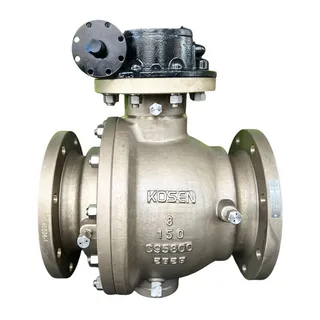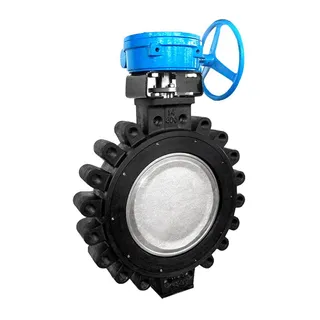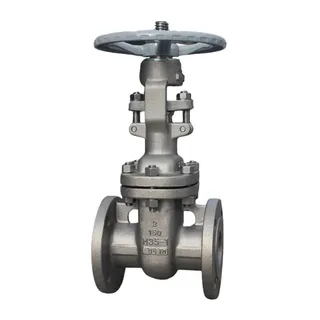In the industrial field, valves are key devices for controlling fluid flow. As a long-established and widely used type of valve, plug valves play an important role in many industrial scenarios due to their unique structure and performance characteristics. A plug valve is a valve that controls fluid flow by rotating a plug. Its plug is usually conical or cylindrical and mates with the conical surface of the valve body to form a sealing pair.
Plug valves have the advantages of simple structure, quick opening and closing, and low fluid resistance. They are widely used in oilfield development, petrochemical, chemical, coal gas, natural gas, liquefied petroleum gas, HVAC industries, and general industry. This article will provide a detailed introduction to the key points of plug valve selection, helping you choose the most suitable plug valve among many options.
Before delving into the key points of plug valve selection, let’s first discuss the critical factors in choosing a plug valve. These factors directly affect the valve’s performance, lifespan, and cost-effectiveness in practical applications. Therefore, during the selection process, these key factors must be carefully analyzed and weighed to ensure the most suitable plug valve is chosen.
Fluid characteristics are the first factors to consider, including temperature, pressure, viscosity, flow rate, and corrosiveness.
Temperature and Pressure: For high-temperature or high-pressure fluids, it is necessary to select materials that can withstand the corresponding temperature and pressure. For example, carbon steel is suitable for medium temperature and pressure conditions, while stainless steel is suitable for higher temperature and pressure environments.
Corrosiveness: If the fluid is corrosive, special alloys or coated materials must be selected to enhance valve corrosion resistance. For example, for strongly acidic fluids, special alloy materials such as Hastelloy may be required.
Plug valves are divided into hard-sealed and soft-sealed types.
Hard-Sealed Plug Valves: Suitable for high-temperature and high-pressure conditions, but the sealing surface is prone to wear and has a shorter lifespan. Hard-sealed plug valves usually use metal-to-metal sealing, and their sealing performance is improved through precision machining and surface hardening techniques.
Soft-Sealed Plug Valves: Provide better sealing and are suitable for applications with high sealing requirements, but the structure is relatively complex and maintenance is more difficult. Soft-sealed plug valves typically use non-metallic materials such as rubber or plastic as sealing materials, which have good elasticity and sealing performance.
According to the plug structure, plug valves can be divided into unidirectional and bidirectional types.
Unidirectional Plug Valves: Simple structure, but sealing performance is not as good as bidirectional plug valves. They are usually used where sealing requirements are not high, with simple structure and lower cost.
Bidirectional Plug Valves: Suitable for applications with high sealing requirements. Bidirectional plug valves can achieve good sealing in both directions, but their structure is relatively complex and cost is higher.
The main connection methods for plug valves are flange connection and threaded connection.
Flange Connection: Suitable for large-diameter pipelines, providing stable and reliable connection. Flange connections use bolts to connect the valve to the pipeline, offering high connection strength and sealing performance.
Threaded Connection: Suitable for small-diameter pipelines, easy to install and operate. Threaded connections use threads to connect the valve to the pipeline, making installation and disassembly very convenient.
The choice of valve body and stem materials significantly affects the valve’s performance and service life.
Valve Body Material: Common materials include cast iron, carbon steel, and stainless steel. Cast iron plug valves are suitable for general occasions and are cost-effective; carbon steel plug valves are suitable for medium-to-high pressure and small-to-medium diameter applications; stainless steel plug valves are suitable for applications requiring high sealing and corrosion resistance.
Stem Material: The choice of stem material also affects valve performance. Carbon steel stems are suitable for general conditions, while stainless steel stems are suitable for applications requiring high corrosion resistance.
Plug valves can be operated manually, electrically, pneumatically, or hydraulically. Selection should consider the work environment, safety, and convenience.
Manual Operation: Controlled by a handwheel or handle, suitable for applications with low operation frequency.
Electric Operation: Driven by a motor, suitable for remote control or automated control.
Pneumatic Operation: Driven by compressed air, providing fast response, suitable for applications requiring rapid opening and closing.
Hydraulic Operation: Driven by hydraulic oil, offering high driving force, suitable for large-diameter or high-pressure applications.
The valve size should match the pipeline diameter to ensure smooth fluid flow. Selection requires calculation based on flow rate and valve hydrodynamic performance to choose the appropriate size.
While meeting technical requirements, cost-effectiveness must also be considered. Selecting a valve with high cost-performance ensures performance while reducing overall cost. When choosing, consider not only the purchase cost but also the service life and maintenance costs.
Plug valves come in various types. According to different classification standards, they can be divided into multiple types. Each type has unique structural characteristics and application scenarios. Understanding these classifications and applications can help users better select plug valves suitable for their needs.
Soft-Sealed Plug Valves: Commonly used in harsh environments such as corrosive or high-hazard media, where zero leakage is strictly required, and where valve materials will not contaminate the medium. The valve body can be made of carbon steel, alloy steel, or stainless steel according to the medium. Self-lubricating bushings such as F4, F46, PVDF, PP, PO, PE can be used according to temperature and medium, providing good lubrication, low friction, flexible plug operation, and long service life.
Oil-Lubricated Hard-Sealed Plug Valves: Can be divided into conventional oil-lubricated and pressure-balanced plug valves. Special grease is injected from the top of the plug into the gap between the valve body and plug, forming an oil film to reduce operating torque, improve sealing, and extend service life. Working pressure can reach 64 MPa, maximum temperature 325°C, and large diameters up to 600 mm.
Lift-Type Plug Valves: Available in various structures, with soft and hard sealing surfaces. The basic principle is that the plug rises during opening, rotates 90° to fully open, reducing friction with the valve body sealing surface; when closing, the plug rotates 90° to the closed position, then descends to contact the valve body sealing surface to achieve sealing.
Three-Way and Four-Way Plug Valves: Suitable for devices where the flow direction needs to be changed or the medium needs to be distributed. According to operating conditions, soft-seated or hard-seated lift-type plug valves can be selected.
Soft-Sealed Plug Valves: Suitable for applications with high sealing requirements, providing good sealing performance but relatively complex structure.
Self-Sealing Plug Valves: Have automatic sealing function, suitable for applications requiring automatic sealing.
Oil-Injected Plug Valves: Improve sealing and reduce wear by injecting lubricating oil, suitable for applications requiring lubrication.
Suppose you need to select a plug valve for a petrochemical facility to control high-temperature, high-pressure corrosive fluids. The selection steps are as follows:
Determine fluid characteristics: The fluid has a temperature of 300 °C, a pressure of 40 MPa, and is corrosive.
Choose the sealing type: Due to the fluid's corrosiveness and high sealing requirements, select a soft-seal plug valve.
Select the plug structure: Considering the high sealing requirement, choose a bi-directional plug valve.
Select the connection type: For large pipeline diameters, choose a flange connection.
Select body and stem materials: Use stainless steel for the valve body and stem to enhance corrosion resistance and service life.
Choose the actuation method: Considering the need for remote control and automation, choose electric actuation.
Determine valve size: Select the appropriate valve size based on flow rate and fluid dynamics calculations.
Consider cost-effectiveness: Take into account purchase cost, service life, and maintenance cost to choose a valve with high overall value.
By following these steps, you can select the most suitable plug valve, ensuring it meets technical requirements in actual applications while maintaining good economic efficiency.
As an important industrial valve, selecting a plug valve requires considering multiple factors, including fluid characteristics, sealing type, plug structure, connection type, body and stem materials, actuation method, valve size, and cost-effectiveness. Only by thoroughly understanding these factors can you choose the most suitable plug valve, ensuring optimal performance in actual operation while minimizing overall costs. This guide aims to help you make informed decisions when selecting plug valves.



